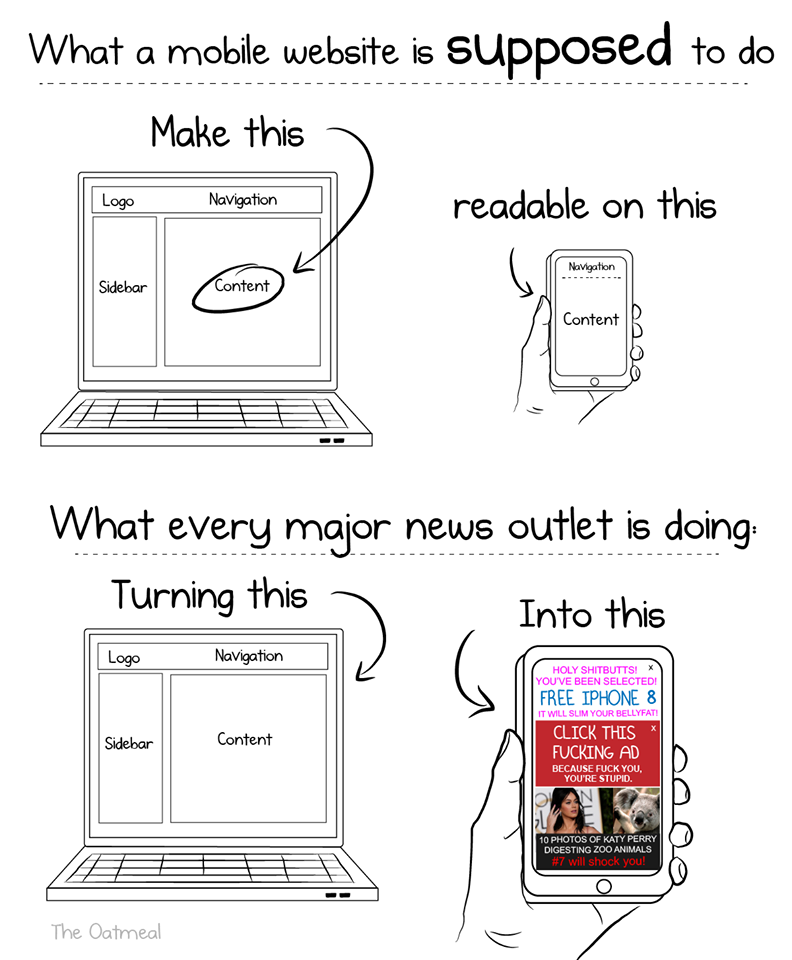 How is your mobile strategy doing? Blooms or barely breaths? Do you have an idea how to do it correctly, some kind of a bigger picture, or do you just spam people with pushes? Tough call, isn’t it? So maybe we’ll talk for a while about the fundamentals and we will try to understand both the mobile channel and how to create an unforgettable shopping experience within it?
How is your mobile strategy doing? Blooms or barely breaths? Do you have an idea how to do it correctly, some kind of a bigger picture, or do you just spam people with pushes? Tough call, isn’t it? So maybe we’ll talk for a while about the fundamentals and we will try to understand both the mobile channel and how to create an unforgettable shopping experience within it?
Mcommerce is a small piece of a wider category – ecommerce. However, its global share in online commerce revenue grows on a yearly basis.
A modern consumer uses the omnichannel and mobile channel’s importance in user experience creating grows every year. People buy mobile and use mobile payments. Stores – the multichannel ones, as well as those who didn’t go digital yet must adjust their vision of the client to the surrounding reality. More than 70% of consumers buy the same brand in various places and they expect a consistent offer in each and every one of them. – says Patrycja Sass-Staniszewska, CEO of e-Commerce Poland, Chamber of Digital Economy.
Tablet owners buy the most, because of the best UX
… and iPad owners are the biggest spenders of all.
 Source: Statista
Source: Statista
It is caused by many different factors. First (and the simplest) explanation is that they just can afford it. It’s simple – gadgets with a bitten apple aren’t the cheapest ones. Bah! Some people even call them the overpriced artifacts of social status. It’s perfectly understandable that their owners usually belong to the wealthier part of the society, ergo they can spend more money on shopping.
But the wealth is not the only factor. In the omnichannel game the winners adjust the message to the medium and personalize it appropriately using data from many different media. The main reason of this fact is one small prefix: “multi-“. And, boy, we are so fixated on it! We move in multichannel, we are multitasking at work, and when it comes to the quality time we…
…Multiscreen
Whether at work or aftermath, we are fused with electronics and use it as some extra limbs or artificial senses. We can’t even notice how we switch between the channels back and forth all over again. We read the messages on the tablet and emails on the smartphone while listening to music on the online radio played on the Smart TV, and in the meantime, we process a large spreadsheet data package on the laptop. Or we google some products seen on the TV screen on the smartphone that is lying within a hand reach. Being in the store we make photo shoots of items we like and do a fast comparison of online offers. Examples can be multiplied. So how do you make mobile users (ie, ¾ of all internet users) feel special?
Optimize – not minimize
At first, I want to show you a perfect satire on how many marketers (don’t) understand the mobile User Experience made by Matthew Inman AKA The Oatmeal:
Source: http://theoatmeal.com/comics/mobile_website
First things first – the web page. According to Google’s survey, as many as 61% of users refuse to re-visit the websites that are not adjusted to their device, and 40% of them go straight to competing sites. You can approach two way – either give it a try with Mobile First, or you’ll optimize the existing website for mobile users.
Mobile First refers to creating a mobile website from scratch while you start your digital journey, and then expanding it to a full version for larger screens. This tactic was right and revolutionary but it was in 2009, when the author of the concept, Luke Wroblewski, published an entry with the exact same title. However, after more than 7 years, both the market and the user’s habits have changed. Today 95% of the mobile time we spend using applications, not browsing the web. Also, the range of devices used to browse the internet have “slightly” widened with Smart TV, which “steals” the web-time especially in the morning, before work and in the afternoon when we relax. So the sole preparation of a page that adjusts to Samsung with Android, or iPhone with iOS is not enough, and fixation for specific devices and operating systems is already passé. Maybe we should establish a brand new approach; let’s say – Screen First.
If you decide to redesign the existing website – stick to some rules:
- When creating a general outline of the page, take a critical look at it. Ask yourself what is its purpose (company presentation, product sales, education, maybe something else), what is its core (what content is key), why users visit it in the first place. According to the answers, prepare an overall brief of the entire page by focusing on key content and treating the rest as extras.
- Identify users needs. Use the behavioral profiling of your website visitors. Instead of guessing and playing chance, assign this task to the marketing automation platform so you can get the information from the source while reducing the number of points of information supply. The result is a more transparent, up-to-date image of model contact.
- Reduce the content and change the layout. Draw a page as the narrow column. Key content, buttons, and articles should be placed right under the heading, and the less important elements should go underneath. You will find a visual hint on the image above.
- Limit the amount of text and banners. Once again I will refer to the picture of Mr. Oatmeal – mobile plays by its own rules. Not all the elements that convert on the full-size website will work in this channel.
- Make everything thumb-reachable. Every element that works must be easy to click when the phone is held with one hand. Moreover, those elements mustn’t collide with the general content.
- Test everything: website’s look on different devices (as you don’t want any group of users feel excluded), users reactions, smoothness of switching between particular tabs, landing pages, etc. This is the website you will redirect app users to!
If it comes to the technical aspect, the world wide web offers numerous guides to responsive website design. start with those:
Combined message
And now focus! Pampering all communication channels is not enough! Each of them: website, mobile, email, browser, ad networks, applications, social media, offline and whatever-else-you-can-come-up-with can (and should) work together. What the top players win with are the synergies created by combining data and actions from different channels into one consistent plan. This is the clou of transition from multichannel to omnichannel.
Make sure to use the data from various channels correctly. If someone is already your online store customer, do not show them your ad for newly-registered mobile users! But if they watched the specific items for a long time in a stationery store (use beacons to gather this kind of data), process the information within the CRM, and launch a retargeting campaign via RTB networks and show them the exact same items.
Read more about the hyperpersonalization of RTB ads here.
Panta rhei
So everything flows – times and people they are a-changing, customers come and go. Accept it and be smart! Rather than writing new scripts for the website, the app or marketing automation platform every month, use technologies that can learn. An example is Copernicus Machine Learning & AI by SALESmanago – a technology that learns the behavior of every single customer, predicts its buying behavior and recommends personalized products according to it. What’s more, based on the individual actions of hundreds of customers and the product’s specific, this class of tools is able to predict the future needs of each customer individually and as an outcome optimize the message addressed to them, using the channel and type of message that will be most relevant at the time.
And where’s the ROI?
It’s a pretty straightforward relation – the more people will be satisfied with the experience you make, the more people will become your customers. By mastering this experience and emphasizing the personalized communication, you work for the high retention rates, that is, you create long-term relationships with your customers. And remember – it is much harder (and more expensive) to attract a new customer than to keep the one who has already bought something from you.
You can read about the secrets of maintaining high retention in our new ebook. Download it for free by clicking here.

 Follow
Follow
















